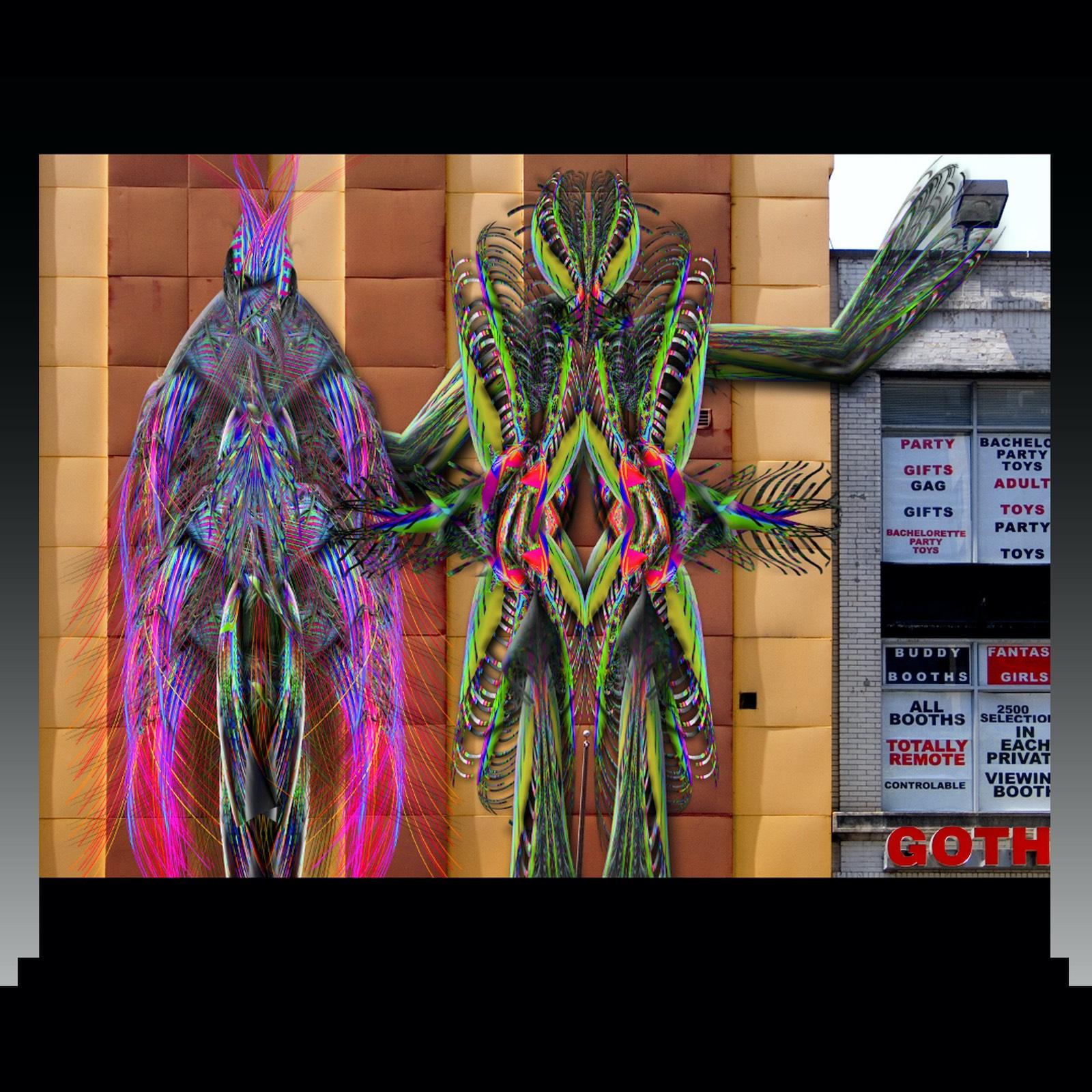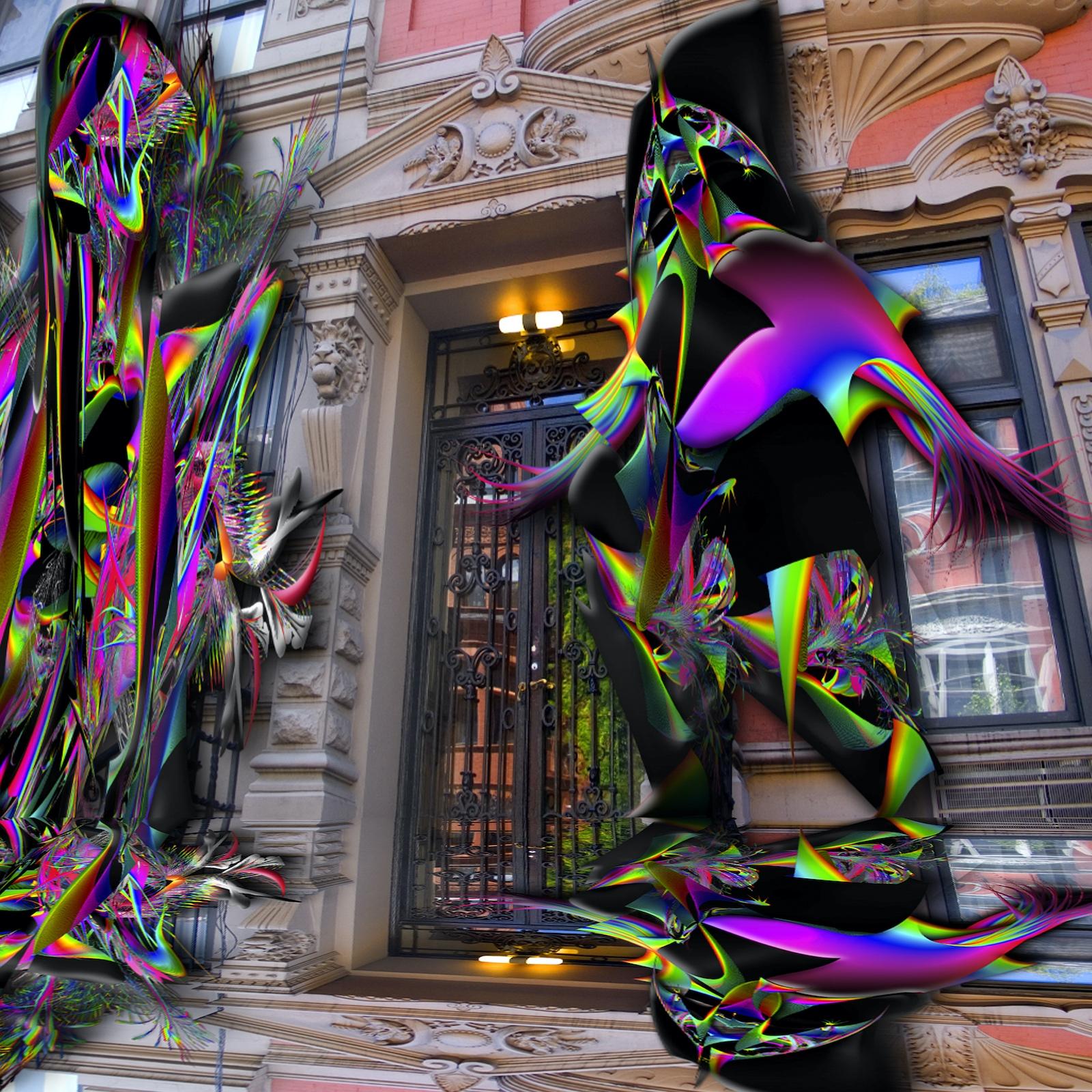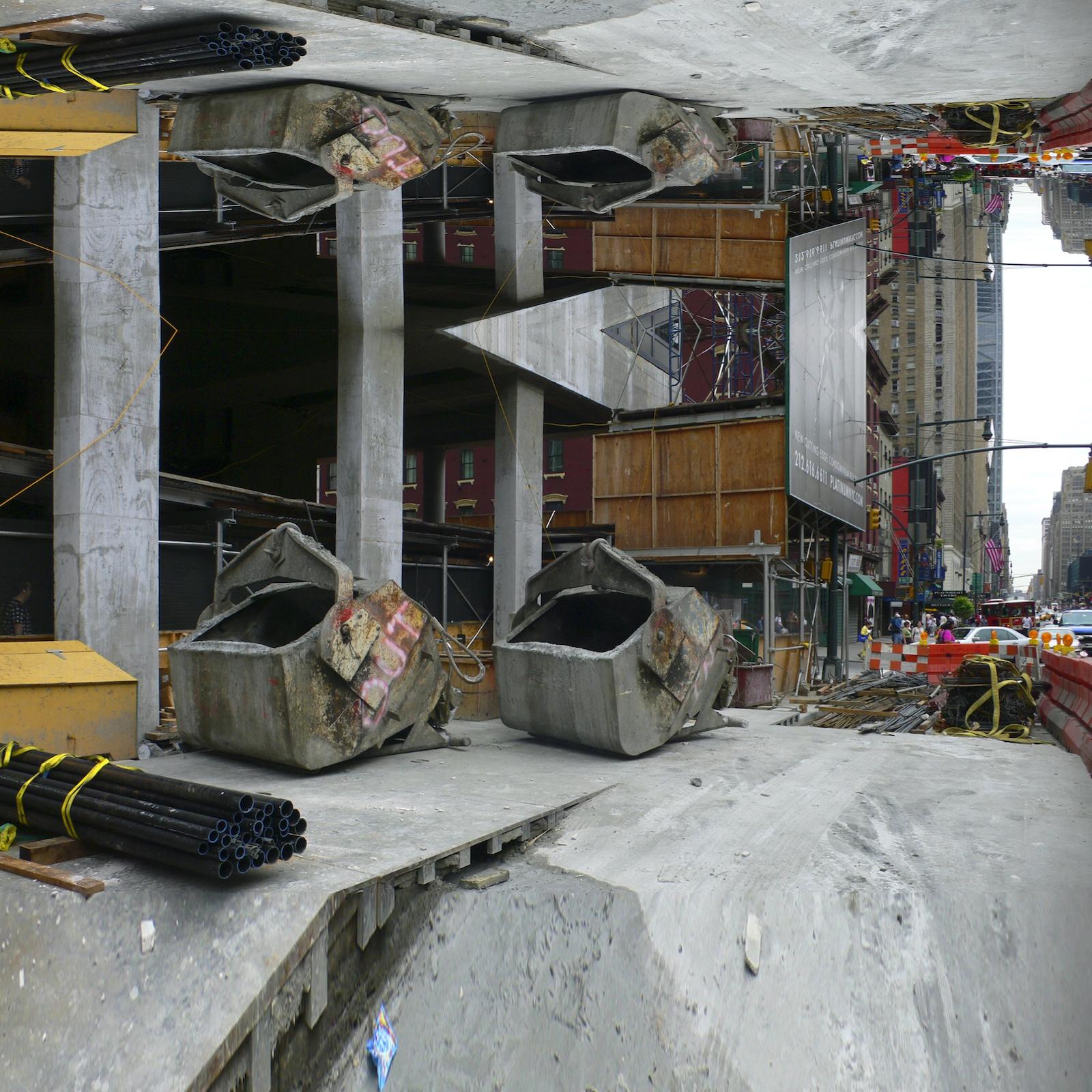During neighborhood strolls through the eerily empty city streets in the late summer and fall of 2020, Samaras captured photographs of buildings and construction sites using his iPhone. By means of his characteristic manipulations, Samaras alters these striking, almost formalist photographs of worksites by digitally introducing surreal mirrorings, unnatural chromatic saturations, and disjointed fractures in composition.
In a related suite of photographs that he shot of nearby buildings, he populates the cityscape with a cast of his bizarre and creaturely “performers”—brightly-colored figural abstractions, forms which the artist has been developing for more than a decade. Part of his ongoing Gestures series (2008 – ), Samaras’s figures spill from the confines of their formerly hermetic worlds across the city streets like specters, haunting the fragmented and abandoned architectures of the artist’s personal cosmos.
Shot within a close radius of his studio in Midtown, Samaras’s work flips these exterior landscapes and re-absorbs them inward, transforming them into intimate spaces. Emptied for the most part of human inhabitants, what would otherwise be bustling streets become surreal extensions of the artist’s interior solitude, peopled instead by his performative imaginings—themselves surrogates for his own persona.
Capturing the city’s public zones in the interior of his computer, Samaras folds their compositions in on themselves, creating black holes and endless abysses that fascinate even as they threaten. “I want my works to help you see, like a surgeon,” Samaras has remarked, “when you open it up, it’s gutsy stuff.”
Legendary for his reclusive lifestyle, Samaras’s practice is studded with prophecies and prescriptions for leading a creative life under the confinements of a pandemic. “I’ve been alone for 20 years,” Samaras remarked at the outset of the COVID-19 crisis, “so being in my apartment now, again, is not a big deal. All that’s different now is the possible destruction of all of the things that you knew were around.” Those things included the throngs of tourists, visitors, and office workers who packed the streets of Samaras’s neighborhood each day, and which suddenly disappeared in March of 2020. In this recent work, Samaras’s figures seem to suggest surrogates for Manhattan’s sheltering denizens, stalking the atmospheres of an indelibly altered city.































